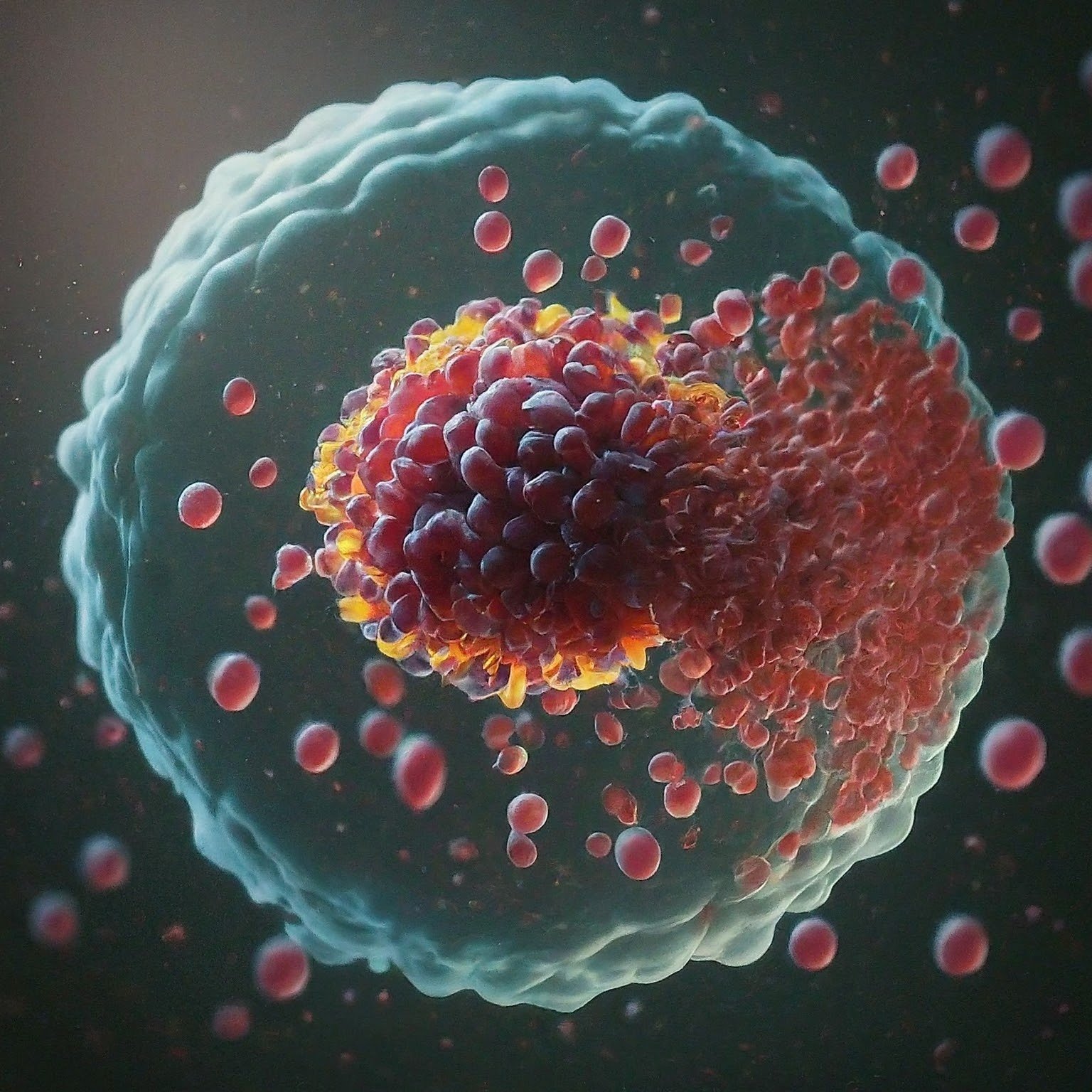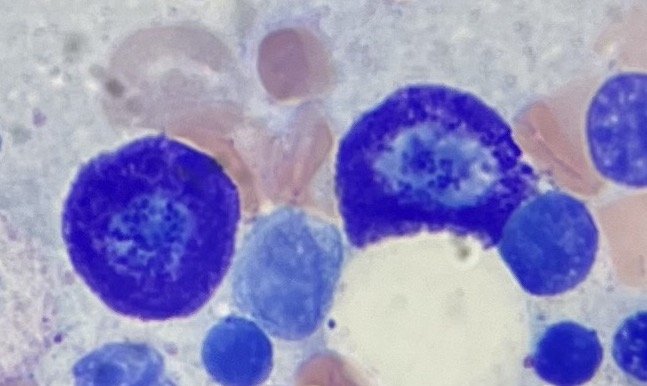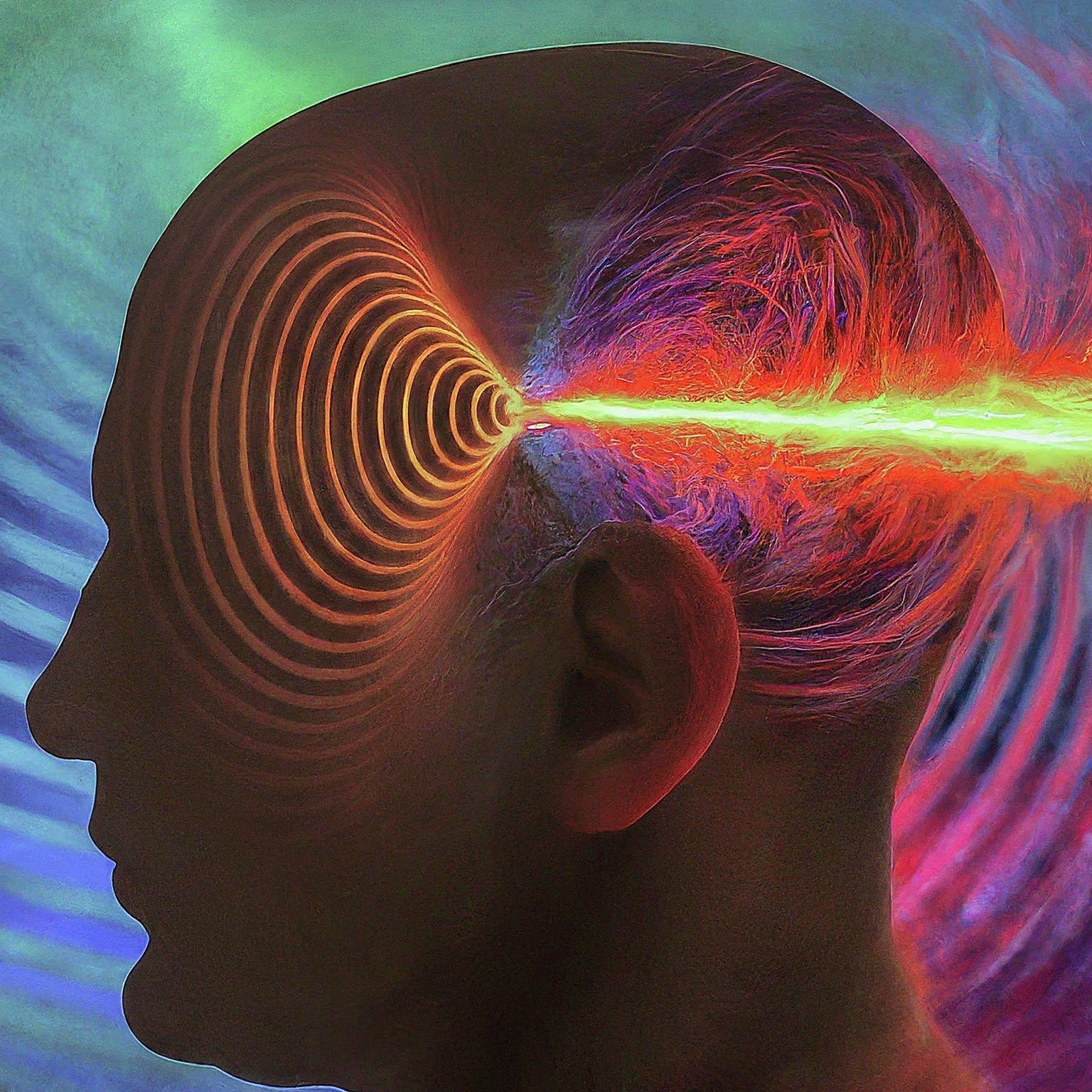How does electromagnetic radiation affect our health?
As we explained on the Light page, visible light—along with infrared and ultraviolet—is part of a narrow band of electromagnetic radiation emanating from the Sun that passes through Earth’s atmosphere. This light, along with the Schumann resonance, and the Earth’s magnetic field, are the only electromagnetic fields (EMFs) native to our planet, and the only fields we are naturally adapted to. These are the fundamental living energies that sustain life on Earth. Anything outside of this spectrum is alien energy, incoherent to our biological systems, and must be approached with caution.
When people hear the term radiation, they tend to think of nuclear radiation. This band of energy to the right of the visible spectrum on the graph below. It is often referred to as ionizing radiation, because it is higher energy and is powerful enough to dislodge tightly bound electrons from atoms in our cells, creating ions. These ions cause chemical reactions in our cells that can lead to direct DNA damage, and indirect damage via free radical production. It has long been known that ionizing radiation can cause cancer, and this is how. What about the lower energy radiation to the left?
Non-Ionizing Radiation
Non-ionizing radiation includes the electromagnetic fields emitted by devices like cell phones and Wi-Fi routers, Bluetooth headphones, radio waves, Radar, microwave ovens, and A/C fields from wires in our homes. These fields are weaker and don't have enough energy to directly damage DNA, and though higher levels of exposure can cause tissue heating—and eventually burning—exposure to lower levels has long been considered harmless by our health institutions. This viewpoint has been so dominant over the years that it has been hard for scientists to get funding to research the issue, but there have been some important discoveries, nonetheless, and we now have a solid evidence that non-ionizing radiation can harm our health. In 2018, the Nation Toxicology Program (NTP), a division of the National Institute of Health concluded a lifetime study of the effects of exposure to 2G and 3G cell phone radiation on rats and mice. The study was proposed by the NTP as a means to shutdown speculation by the public that cell phones cause cancer, and despite methodology that appeared to have been designed to stress the control subjects—in order to induce illness, and skew the results—the results showed:
A statistically significant increase in tumors of the heart, brain and adrenal gland in male rats
A noteworthy increase in tumors for the pancreas, prostate, pituitary, liver and lung
Heart disease and prenatal effects, including lower bodyweight
DNA damage
In the study, they controlled for any thermal effects by insuring that the rats body temperature never rose by more than 1 degree. It is worth noting, that since this study was completed, mobile phone usage has increased rapidly, and we are using radio frequencies with much higher energy than used in the study. The NTP had planned a follow up to the 2018 study, but the research was abruptly cancelled in early 2024 with little fanfare, and no more research is scheduled or being planned.
In the Light page we discussed how blue light toxicity comes about by the freeing of vitamin A from the photoreceptors in the eyes and the skin by weakening the bonds between them. It turns out that electromagnetic waves, particularly in the microwave spectrum, can free vitamin A as well by enacting a rotational force on the chemical bond. This is alarming, because while humans have a particularly unstable bond, nocturnal mammals have an especially strong bond, meaning: any damage observed in rats and mice is going to be stronger in humans.
EMFs and Health
-

Oxidative Stress
Recent research by Dr. Martin Pall shows that non-ionizing radiation has the same impact on our health as ionizing radiation but through an indirect mechanism. His studies indicate that it can lead to cellular damage by affecting specific cellular processes, despite lacking the energy to directly break chemical bonds in DNA.
One of the key mechanisms highlighted by Pall is the activation of voltage-gated calcium channels (VGCCs) in our cell membranes. Non-ionizing radiation can activate these channels, allowing excessive calcium ions to flood our cells. This influx of calcium is significant because it can set off a cascade of biochemical reactions within the cell.
The increase in intracellular calcium can lead to the production of reactive oxygen species (ROS). These are highly reactive molecules that can cause oxidative stress, a condition where the balance between ROS production and the body's ability to detoxify these harmful molecules is disrupted. Oxidative stress can damage cellular structures such as DNA, proteins, and cell membranes, leading to mutations and various health issues, including cancer.
Furthermore, the increased calcium levels and oxidative stress can also trigger inflammatory responses. While inflammation is part of the body's natural defense mechanism, chronic inflammation can lead to further cellular damage and degrade our overall health.
-

Mast Cell Activation Syndrome
Mast Cell Activation Syndrome (MCAS) is a condition characterized by the inappropriate activation of mast cells, a type of immune cell involved in allergic reactions and inflammation. When activated, mast cells release various chemical mediators, such as histamines, that can cause a wide range of symptoms, including flushing, hives, itching, headaches, abdominal pain, diarrhea, and cardiovascular issues like heart palpitations and blood pressure fluctuations. These symptoms can vary in severity and frequency, significantly impacting an individual's quality of life, and can even be life threatening by inducing anaphylactic shock.
In recent years, the prevalence of MCAS has increased dramatically. While estimates vary, some studies suggest that MCAS affects up to 17% of the global population. This rise in prevalence has closely tracked the increases in EMF exposure as commercial and residential wireless technologies have proliferated
Research by Olle Johansson and Shabnam Gangi suggests that exposure to EMFs can lead to the degranulation of mast cells, releasing inflammatory mediators such as histamine. Additionally, dendritic cells—specialized immune cells that detect foreign substances—then release signaling molecules such as cytokines—which influence immune responses and inflammation. These factors can contribute to the sensation of inflammation and sensitivity to environmental stimuli. Mast cells in the heart may also be affected, potentially altering cardiac function.
-

Blood Brain Barrier Permiability
Alan Frey was a pioneering researcher in bioelectromagnetics, and his work in the 1960s was the first to show that electromagnetic fields could affect the blood-brain barrier (BBB). His groundbreaking research revealed that radiofrequency radiation can increase BBB permeability, allowing substances that are normally kept out to enter the brain. This suggests that non-ionizing radiation from everyday sources like cell phones and Wi-Fi could have profound effects on brain physiology and health.
Recent research exploring the mechanisms of this effect has demonstrated that exposure to specific frequencies of electromagnetic radiation can activate the mkp-1/ERK signaling pathway. This activation leads to increased blood-brain barrier permeability and cognitive impairments, including impaired spatial memory. These findings suggest that EMFs can disrupt normal cellular functions and contribute to neurodegeneration.
Further studies have expanded on Frey's work, showing that EMF exposure can alter microRNA expression within the brain, which regulates gene expression and is linked to diseases like Alzheimer's. These changes can also impact the pineal gland, reducing melatonin production, disrupting sleep patterns, and affecting mood and immune function. Understanding these effects is crucial as we continue to investigate the potential health implications of modern technology and EMF exposure
5G and Beyond…
The rollout of 5G wireless technology introduces several novel features not used in earlier generations, fundamentally changing the nature of radio waves. These advancements enable high-bandwidth activities, to be used by many users simultaneously, but drastically increase our exposure to harmful radiation.
These novel features include…
Focused Waves
Beamforming is a critical feature of 5G designed to enhance signal efficiency. Unlike traditional antennas that radiate signals in all directions, beamforming allows antennas to focus signals directly toward a specific user or device. This targeted approach improves signal strength and quality but also increases exposure to radiation for users in the beam's path.
Massive MIMO
Massive multiple-input and multiple-output (MIMO) is another key technology in 5G that enhances network capacity. It involves using a large number of antennas at the base station to transmit and receive multiple data streams simultaneously, allowing many users to be served at the same time. This increases the overall throughput of the network, but also means higher exposure levels as signals converge in certain areas.
Antenna Proliferation
5G networks require more antennas placed closer to users compared to previous generations. This is because 5G operates at higher frequency bands, such as millimeter waves, which have shorter wavelengths and can carry more data but have a limited range and are easily obstructed by buildings and other obstacles. To overcome these challenges, 5G networks utilize a higher density of small cells—miniature base stations—often hidden on streetlights, buildings, and other structures to provide continuous coverage.
Signal Strength
5G technology employs signals that can be up to 100 times stronger than those used in 3G networks. This strength is necessary to support high-speed data transfer and connectivity for numerous devices simultaneously. However, this increased power can also mean higher exposure levels for users and those nearby.
What Does This Mean for Your Health?
If there is any good news, it is that if you don't have a 5G device in your home or hand, the radiation from a base station, including those from satellites, is minimal. However, the proliferation of small cells closer to living areas means constant low-level exposure. When using a 5G device, the power density of radiation directed at you from the base station will be much stronger and more focused due to beamforming, resulting in more intense exposure levels.
Unfortunately, while you can control your own usage, you cannot control others' usage, meaning the habits of people around you are as important as your own. What’s more, 5G was introduced with the idea of putting antennas in everything from dishwashers, to toasters, light bulbs, and so on to create and “Internet of Things”, that will be constantly connected. In remote areas where the infrastructure doesn’t exist to expand closely placed base stations, 5G will be delivered via satellites at the upper reaches of our atmosphere.
5G will be unavoidable, and 6G which builds upon 5G with even more powerful signals is on the horizon, so our best bet is to create a sanctuary in our own living spaces, and optimize our mitochondrial capacity to ward off this new environmental toxin.
Citations
1. Non-Ionizing Radiation Effects Leading to Excessive ROS Production and Cell Damage
Oxidative Stress and Antioxidants: This review discusses how various factors, including non-ionizing radiation, can lead to the overproduction of ROS, resulting in oxidative stress and subsequent cellular damage. Link to study
Reduction–Oxidation (Redox) System in Radiation-Induced Cellular Damage: The article explores how non-ionizing radiation can disrupt the cellular redox balance, leading to increased ROS levels and oxidative stress, which in turn cause DNA damage and affect cell viability. Link to study
RONS and Oxidative Stress: An Overview of Basic Concepts: This overview highlights the role of reactive oxygen and nitrogen species in cellular damage, emphasizing that exogenous sources like non-ionizing radiation can elevate ROS production, leading to oxidative stress and potential cell injury. Link to study
Radioprotective Agents to Prevent Cellular Damage Due to Ionizing Radiation: While focusing on ionizing radiation, this study provides insights into how radiation exposure leads to ROS generation, causing DNA, protein, and lipid membrane damage, which is relevant to understanding the broader impacts of radiation-induced oxidative stress. Link to study
2. Oxidative Stress and Voltage-Gated Calcium Channel (VGCC) Activation
Dr. Martin Pall's Research: Dr. Pall's studies suggest that electromagnetic fields (EMFs) activate VGCCs, leading to increased intracellular calcium levels and subsequent oxidative stress. Link to study
Oxidative Stress and NADPH Oxidase: This review discusses how EMFs disrupt the electrochemical balance of biological membranes, causing abnormal cation movement and dysfunction of voltage-gated ion channels, which can trigger oxidative stress and DNA damage. Link to study
3. Mast Cell Activation Syndrome (MCAS) and EMF Exposure
Studies by Olle Johansson and Shabnam Gangi: Their research proposes a model where EMF exposure leads to mast cell degranulation, releasing substances like histamine, which could explain sensitivity to electromagnetic fields. Link to study
Electrohypersensitivity Review: This review highlights findings that EMF exposure can trigger mast cell degranulation, leading to increased levels of mediators such as histamine, which are implicated in inflammatory responses. Link to review
4. Blood-Brain Barrier (BBB) Permeability
Alan Frey's Research: Frey's early studies demonstrated that weak radiofrequency signals could open the BBB in rats, allowing substances to pass into the brain that would normally be restricted. Link to study
Study on 900 MHz EMF Exposure: Research indicates that exposure to 900 MHz EMFs can impair spatial memory and increase BBB permeability in rats by activating the mkp-1/ERK pathway. Link to study
Review on EMFs and the BBB: This review discusses various studies showing that EMF exposure can affect BBB permeability, potentially leading to neurodegenerative diseases. Link to review
5. Additional Historical and Contemporary Research on Electromagnetic Fields
Dr. Robert O. Becker's Work: Dr. Becker's research focused on the role of DC electric fields in the human body, specifically their necessity for healing and regeneration, guiding cell growth, and tissue repair. He developed techniques for aiding bone regeneration and investigated the effects of external electromagnetic fields on the body. His book, The Body Electric, is a key reference on this topic. Link to book
Andrew Marino's Study on Nonlinear Effects: Andrew Marino's breakthrough study, Different outcomes in biological experiments involving weak EMFs: is chaos a possible explanation?, published in 1995, focused on the effects of a 0.5 kV/m, 60 Hz electric field applied continuously to successive generations of mice. The study found consistent alterations in body weight variance among exposed animals. Link to study
Trigeminal Neurons Detecting EMF Radiation: Research by Andrew Marino demonstrated that trigeminal neurons, which are responsible for facial sensation, can detect EMFs emitted by cellphones, providing a mechanism by which EMFs could influence cellular function. Link to study
Andrew Marino's Book - Going Somewhere: Andrew Marino documented his research and experiences with electromagnetic field studies in his book Going Somewhere. This book is a detailed account of the challenges faced in EMF research. Link to book
"Magnetic field effects in biology from the perspective of the radical pair mechanism": This study reviews how magnetic fields influence biological systems through the radical pair mechanism, affecting various physiological functions. Link to study
"Radical pairs may explain reactive oxygen species-mediated effects of weak magnetic fields on neurogenesis": This research proposes a radical pair mechanism involving flavin-superoxide radical pairs to explain how weak magnetic fields modulate reactive oxygen species production, impacting neurogenesis. Link to study
"Sensing of magnetic field effects in radical-pair reactions using a single-molecule approach": This study investigates magnetic field effects in chemical reactions attributed to the evolution of transient radical pairs, using a single-molecule approach to observe quantum coherent phenomena. Link to study


